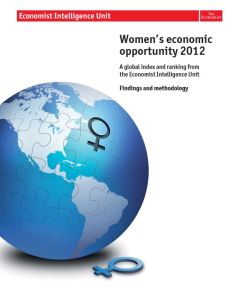Melden Sie sich bei getAbstract an, um die Zusammenfassung zu erhalten.

Melden Sie sich bei getAbstract an, um die Zusammenfassung zu erhalten.
The Economist Intelligence Unit
Women’s Economic Opportunity 2012
A Global Index and Ranking from the Economist Intelligence Unit
EIU, 2012
Was ist drin?
After China, where is the next great source of new workers? (Hint: she’s right here.)
Recommendation
The search for the next big idea in economic growth often overlooks women. Even in countries renowned for economic success, such as Germany, politics often focus more on women’s traditional role in the family than on maximizing their freedom and productivity so they can develop their economic potential. While the Economist Intelligence Unit’s biannual Women’s Economic Opportunity Index may be thin on details from the 128 nations surveyed, getAbstract recommends its clear, smart analysis of global policies and practices related to women in the workforce and the economic trends affecting them.
Summary
About the Author
The Economist Intelligence Unit is an independent research and analytics organization that offers forecasting and advisory services.





















































































































Comment on this summary